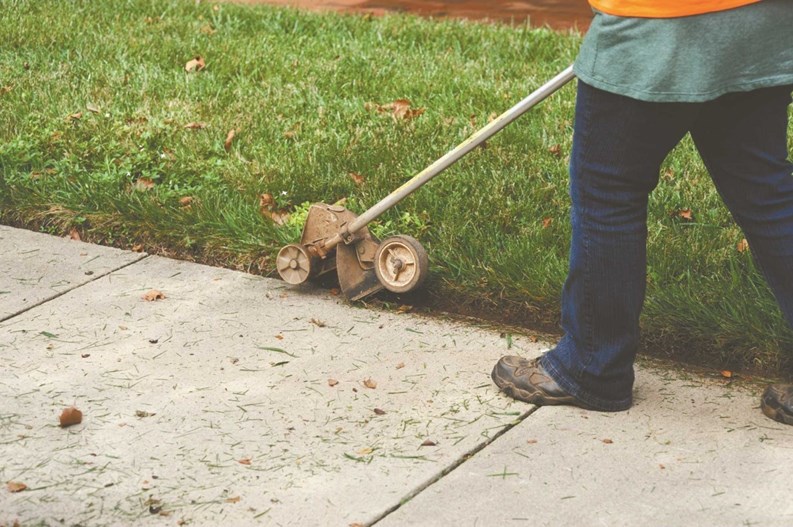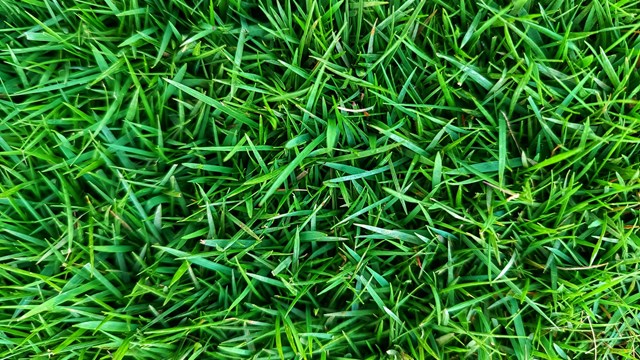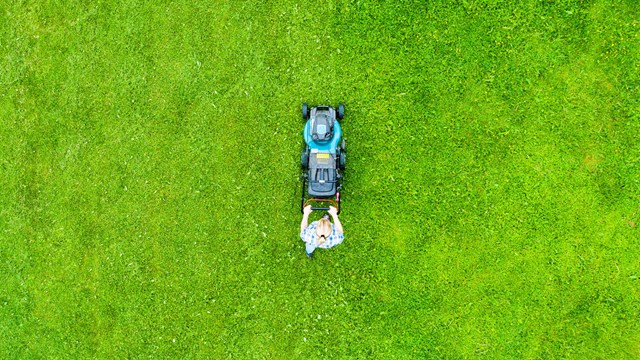New York City is not exactly known for year round sunshine and palm trees. At first glance greenery, lawns and lawn care, may seem a non–issue for many New Yorkers, but like most Americans, New Yorkers have a long-running love affair with lush green turf.
The High Line, an elevated park that runs from Gansevoort street in the Meatpacking District to 34th street in Midtown features 210 species of perennials, grasses, shrubs and trees and has attracted millions of visitors—many of them locals—annually since its inception in June 2009. And let’s not forget beloved Central Park, the 843-acre park in the middle of New York City that boasts a great lawn, lakes, ponds, a bridle path, walking trails and much more, and is the most visited urban park in the United States.
Keeping grass green in New York’s widely varying climate where winter temperatures can average below freezing and summer months can bring triple digit temperatures, can be a challenge.
Additionally, urban pollution, salt exposure and snow plow damage and other urban stresses here can present a whole different set of challenges compared to most other states.
Condominium and homeowners associations often find landscaping and lawn care the largest line item in the budget after insurance. Landscaping also adds to a property’s real and perceived value, not only for current residents, but for those seeking a new address to call home. Nothing ups the ante on curb appeal quite like well-maintained landscaping and colorful plants.
Keeping it Green
Brendan Keany, general manager of the 10-building, 2,820-unit complex, Penn South Cooperative in Chelsea likes to get involved at the ground level with over 20 acres of open lawn space and an annual operating budget of $500,000 that includes garden labor and materials.
“Penn South is unusual in that we are so large. We have our own in-house staff,” says Keany. “In the summer months, May through September, we have anywhere from six to eight full time employees and during the winter, October through April we are probably down to four or five. We have a lot of open lawn areas between our buildings, so we are talking about 20 acres in open lawn area and that’s a lot of green for New York City.”
Otto Diaz, Penn South’s head gardener for over 20 years says that only the heartiest and most durable grasses should be used for New York lawns. “Being that we are in the New York area cool season grass is the most common. The reason being is because these grasses do well in cool seasons,” he says. “One cool season grass is Kentucky blue grass and the other is tall fescue. These are the grasses that we use at Penn South and they are the most common grasses used in and around New York City, they do really well in extreme temperatures.”
Richard Heller, CEO of the New Rochelle-based company Greener by Design, says that the most popular ground covers in New York City are pachysandra and English Ivy.
“English Ivy is considered an invasive species, even though in New York City there’s not much to invade, the variety that we use in most condos are either Chinese or Japanese,” says Heller. “They are very resistant to disease and both are very low light which is a key factor in New York City.”
A landscape architect is trained to deliver an overall plan complete with blueprints, and to understand the ongoing expense associated with maintaining that plan. “We work with several outside landscapers,” says Keany, “They kind of guide us to what they think is best to use in particular applications.”
It Ain't Easy Being Green
An attractive lawn doesn’t just happen overnight. It requires effort and maintenance. The problems associated with lawn upkeep in New York City can be unique.
“Some of the problems we encounter in the lawns are that we have a lot of interior pathway and we put salt on the pathways in the winter and as a result when the salt dissipates, it dissipates into the grass and into the lawn areas and it really hurts the grass,” says Keany. “We need a very hearty grass and root structure to withstand our winters and what I call the urban environment. The reality is that if you have grass out in the Midwest or the South then clearly it doesn’t have these competing forces such as salt and heavy traffic are other problem we have. So all of these competing negatives necessitate a really strong and hearty grass.”
“A huge problem for lawns and lawn covering in New York City is dogs,” says David Protell, president of Chelsea Garden Center. “What generally happens is that the dogs' urea scars and burns the plant. It depends on how rampant it is, but eventually it will destroy a good patch of lawn and most plants.”
When a lawn becomes stressed it is at risk for weeds and insects. “One of the most common lawn problems that I see is that a lawn is overrun by weeds,” says Diaz. “Mold is another big problem in New York City. That typically happens in areas that don’t get a lot of sunlight or in consistently wet areas, mold usually accumulates in those areas.”
Keany, Diaz and Heller are in total agreement when it comes to signs of serious lawn problems. “Brown spots are a sign that there is a lawn problem,” says Keany. “It was a common occurrence for many, many years here at Penn South before we put in a full irrigation system. There was a lot of browning and yellowing on the lawn. What happens is that with the significantly hot temperatures you get in the summer time you lose the lawn. The lawn goes into a dormant state and it does that to protect itself and what you will see is that it becomes yellowish and then brown. What’s happening is that the grass is not growing and it’s trying to survive as long as it can without water.”
“If you’ve got big, brown dead patches you’ve got an issue. Brown lawn bad, green lawn good,” add Heller. “The primary problem would be under-watering. Lawns are artificial constructs. They don’t occur in nature so they require a lot of water. The second common problem would be improper maintenance. So in the summer if it’s too short—if you cut the grass lower than one third of the blade you run the risk of burning the lawn. If you cut more than one third of the blade it inhibits the ability for the grass to grow.”
When it comes to weeding and feeding the landscape there are a host of environmentally-friendly products on the market. In the hands of a certified lawn care professional, these products will enhance the lawn and landscaping. At no time should an untrained person apply these products since there are so many variables involved with a correct application.
“In the early spring we aerate the lawn,” says Keany. “It’s a process in which you run a roller over the lawn area and it has little spikes and the purpose is that it puts lots of little holes in the lawn area and then you follow that with grass seed. That’s a two part process; it’s called aerating and then over-seeding. And when you do the over-seeding you put on fresh grass seed and you’re basically starting a process where the grass seed will germinate so you will have a good, full lawn come the spring time. You only do this where you need to do it. In other words if your lawn is fine and in good shape you only need to do it in those areas that are distressed or maybe had a pipe break and you had to dig up the grass so you’ve got some lost lawn, then you’d employ these two concepts.”
“Lawn care is a six or seven step program,” says Heller. “In the early spring it’s a good idea to over-seed. Plants have a limited life span so you always want to be introducing new plants.
Think of a lawn as being made up of a million individual plants. You constantly want to be introducing new seed so you are starting new plants every year. We apply compost tea in April and May. Compost tea is a specially brewed fertilization program that’s loaded with live organisms. So the help of any plant depends on soil culture. If your soil is alive—like your intestines—the plants are going to digest nutrients better. The soil is less alive if there is less biological activity and they will digest food less well. We also do a soil test. We take a core sample out of the soil and we send it to a laboratory for testing. This takes about a week. If there is an acidity problem, the fall is the time to deal with that by either applying sulphur or lyme. We find that 99 percent of the soils we touch have acidity problems. More landscapers should perform these soil tests but not everyone does.
When shopping for expert lawn maintenance advice or services, the Internet and websites are an excellent way to do the homework and research. Experts note that many lawn maintenance companies offer free consultations and design options, but use the Internet as a tool and then call in the professionals. Landscaping and lawn maintenance are not an area for even the most robust HOA or community association to undertake. The climate conditions, pests, and weeds native to New York are challenging for even a seasoned professional. Hire the best company available to your board or association and then relax and enjoy the view.
Anne Childers is a freelance writer and a frequent contributor to The Cooperator. Staff writer Christy Smith-Sloman contributed to this article.







Leave a Comment